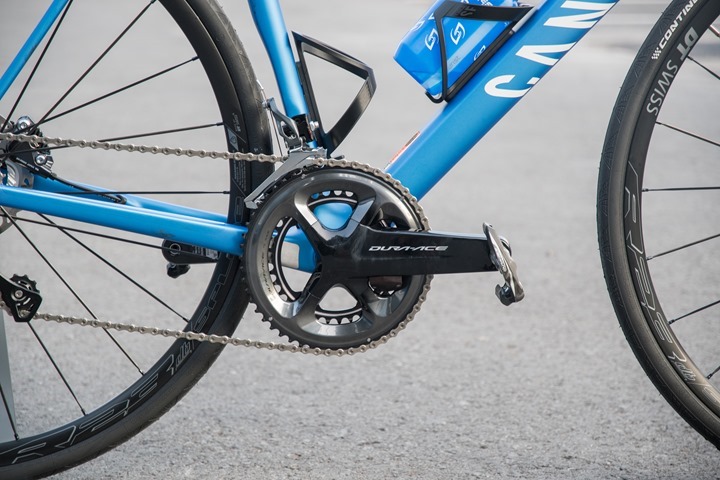Today Stages (finally) announced their long seen but never sold dual left/right power meter, the Stages LR. This new system simply adds in right-side measurement to what has long been Stages left-leg only product line.
Of course, long-time power meter followers know that this isn’t a product out of thin air. In fact, it’s been running Team Sky bikes for a number of years, all in the public eye. You’ve seen it in numerous posts here since early 2016, though it actually rolled out in 2015 to a handful of riders.
While the new LR product is slated to start shipping a bit later this fall, I got to sneak in a few quick test rides on it over the last few days. The unit’s strain gauge portions are all final, though some of the case plastics seen here are 3D printed on the units I rode on (the final parts haven’t come in yet). Given Team Sky and some 200 other riders have been using units over the past few years, there’s a relatively low chance of major issues. Though, as reality would have it, I seem to be a lightning rod for undesired technical events. More on that in a moment.
A Bit of Backstory:
Getting to this point has been a long road for Stages, much of it actually in the public eye. But before we saw it hit Team Sky bikes, the company started in-house testing in the Fall of 2014. At that point Stages was already the power meter sponsor for Team Sky, but only on a single leg solution.
However in January 2015 Stages delivered to Team Sky five Stages LR dual-sided units. It’s these units that we started to see floating around the professional racing scene, including Ian Standard winning the Omloop Het Nieuwsblad in February 2015 on a Stages LR unit. By the end of 2016 Team Sky had negotiated with Stages to supply a full team set of units for 2016, which they delivered in January 2016 to Team Sky.
Over the course of 2016 we saw Team Sky expand roll-out of units to team members. While in theory all riders had Stages LR equipped bikes, it wasn’t necessarily the case that all riders used them on all stages of all races. I found cases in 2016 where left-only systems were in place at major races (mostly TT stages), while doing equipment checks.
Still, Froome was one rider that did use the LR system the majority of the time, and went onto win the Tour de France in 2016 on LR. In 2017 we did see all riders in almost all cases on the LR platform, which I can confirm started with the Tour Down Under in January 2017, and has continued to this day (including the Tour de France and Giro)
As to why Team Sky was so focused on having a dual system instead of a left-only system, Stages provided a quote from Tim Kerrison, who’s the ‘Head of Performance’ for Team Sky. He said:
“We wanted to make sure we weren’t missing anything.”
Which…roughly aligns to what the rest of us already knew: Using a left-only power meter did mean you were in some cases missing something. Previously the Stages units only doubled the left leg power. So if you were imbalanced, that was exaggerated. And of course – it’s entirely natural to be imbalanced – and most important to have that imbalance shift at various wattages. Stages showed a perfect example of that during the presentation, where the data shows a shifting of balance from being more right-heavy to more balanced as the rider neared FTP:
I’m in the same boat, but more pronounced. Here’s my ride from this evening:
And then catch out this shift in power (perhaps due to 3 hours of sleep) on my ride the next morning:
Stages notes they still believe that for some 90%+ of riders out there, that a left-leg only solution should still fit the bill. And for the remaining 10%, a dual left/right system would be better.
The challenge? Figuring out whether or not you’re a 90 percenter or a 10 percenter.
The Tech Specs:
The new Stages LR (with the LR standing for left/right) isn’t quite like previous Stages units which were designed across a wide variety of crank arms that could be easily added to your existing bike setup. With Stages LR, they’re focusing on Shimano Ultegra and Dura-Ace cranksets for now. With crank-arm based systems, the right-side is far more complex due to the chain rings/spider getting in the way of battery compartments, so companies generally have to pick specific crank sets to focus on. That’s been the case for others in the dual crank arm business like 4iiii, Pioneer, and Verve (Infocrank).
Looking at the left side first, you’ll see that’s basically the same as before. No real physical changes there:
Instead, it’s on the right side that the battery pod is most visible, sticking out of the front of the spider:
This battery pod then connects inwards behind the chain rings/spider to where the strain gauge is attached to the crank arm, getting proper left/right power.
The power meter will get about 175 hours on the coin cell batteries, before needing replacement. In the event a single side battery dies, the unit will smart failover to the other side, though there’s a fair bit of time (a number of minutes) before it’ll do so. The left side is considered the primary/master, which takes data from the right side and then transmits it onwards to the head unit. If/when communication fails between the two, that’s when it fails over.
Note on the below Stages dash photo you can see the power balance at 48%/52% (Left/Right).
From a communications standpoint the unit follows past Stages power meters and dual transmits on ANT+ & Bluetooth Smart (they were the first to do so). This means you’ll get total power, power balance, and cadence on both protocols. And for ANT+ you’ll also get Torque Effectiveness and Pedal Smoothness (neither metric exists as a standard on Bluetooth Smart).
The total claimed accuracy of the system is +/- 2%, which is actually the cumulative total of each leg’s claimed accuracy being +/- 1%. Their specific claim was done at 100w @ 90 RPM.
Oh – and for lack of anywhere else, the Stages LR power meter adds 35g of weight (total) to the crankset system.
First (and Second) Ride:
I was sliding into home with getting some test rides in on the Stages LR, mostly due to scheduling around Eurobike. I arrived early evening yesterday (yes, Sunday) and after a quick run-through was handed a bike. We had some initial troubles getting a zero offset to occur on the Stages LR, though eventually it did. So off we went for about a 50-minute ride up a pass and back. On that ride up until the last 30 seconds I didn’t see anything unusual, but since it wasn’t on my usual test bike with three power meters, I only have two power meters worth of data. In which case you don’t really know which was right – as they stayed separate about 18w or so (mostly constant actually).
As we rolled down the last 200 meters of pavement back to the meeting spot, I decided a quick sprint was in order. It had been my second climbing ride of the day, and I didn’t think about doing so up on the climb. The second I laid down some power, the power meter showed zero watts for about 3 seconds before catching up.
What we don’t know at this point was whether it was simply ANT+ interference (it was paired on ANT+ to the Stages Dash), or was something else at either the power meter or head unit level. Regular readers know I usually have dual head units recording for any ‘new’ power meter, but with daylight numbering in the minutes left, we just wanted to get riding. Here’s the sprint moment:
Not terribly satisfied with this result (likely the repeated zero offset failures should have been our warning sign of a mechanical/etc issue), so I stole another bike early this morning. I switched from the blue bike to the red bike, like a scene from The Matrix:
In doing so, things looked much better across the board. My ride was basically a constant set of surges and occasional sprints:
I see one case where the power appeared to drop for a second, though it also did it on the the other head unit early on in the ride for the other power meter. But otherwise things were better.
Out of curiosity, I had also paired a Garmin FR935 to the Stages unit, to see if perhaps there were drop issues. Here’s how the two files compared (Stages Dash vs FR935):
In this case you can see that the files are pretty similar, though even between the two there’s slight differences where one unit picked up data that the other didn’t. So it’s hard to say why things showed up they way they are. But I can say something must have been amiss with that first unit, as the power numbers on the whole were near identical with the second unit compared to the Favero pedals (with the exception of one sprint that seemed slightly different, but again without a 3rd unit to compare it’s hard to know who’s right).
Either way – it’s definitely something I’ll be looking at as part of a full in-depth review down the road.
Stages Dash Price Drop & New Features:
Last week the Stages Dash got a significant price slash from $399 to $299. The company noted two reasons behind the change in price.
First was that a lot had changed in the head unit market since the Dash was announced a year ago this week. I’m sure entities like Wahoo and their BOLT, as well as Garmin’s price drop of the Edge 520 played a part in it. Second was that Stages said they felt they were “a bit slower in getting all the features they wanted” into the Dash, based on what they talked about last summer.
You’ll remember the Dash started formally shipping back in early June, a few months behind schedule. Still, it’s a solid unit and the company continues to grow it, specifically with two near-term firmware updates, the first of which is being released this week.
Firmware Update 1.1 (This Week):
– Adds Advanced Workout Functionality: This will enable auto-lap advance for workout segments under one minute in length (target here is micro intervals).
– Adds Compliance Score in Link: This will rate each portion of your structured/planned workout with whether or not you achieved your targets/goals for each portion. This then culminates in a total compliance score (1-10) against your set workout objectives.
– .RDE Smart Filing: This has two benefits. First is that it’ll capture in the file itself both what you were supposed to do, as well as what you actually did. It also means you’ll be able to restart a given portion of the workout (such as an interval), if you get stuck at a stoplight or broadsided by a camel.
Looking at the compliance score piece, earning a score of 10 means that you were 91% or higher on accuracy of carrying out the intervals within target. Note that for warm-up and rest stages though it’s a bit more lenient and instead focused on your overall average being within target. This is logical as sometimes folks will vary how they warmed up, or during a rest interval you may need to do some maneuver to get into position for the next interval (like just barely making a light…or perhaps even waiting at a light). Here’s how that looks within Stages Link, their online site:
And here’s how each segment of that workout was scored (below, right portion in green/dark green/yellow). You can see both above and below how those portions that were perfect got dark green scores with a rating of ‘10’, whereas one interval got a rating of only ‘7’, and is marked yellow.
Here’s a closer look at the same data (you can click to zoom in):
In fact, for those that want to (you don’t have to), you can even dig further into why you might have failed a given compliance section. Check out the below (definitely click to expand), and you can see where there were two targets (both cadence and power), that you had to nail both. In some cases the rider may have hit one, but was below cadence for others. The color coding indicates how each portion contributes to the entire compliance score. For this particular workout, the rider performed less than awesomely.
And it’s not just hitting zones that matters here too – but also time. See in the below example where the rider only completed a portion of the scheduled interval. This specific view makes it easy for a coach to glance and figure out what portion of the workout was failed (was it duration, power, or cadence).
This is really cool stuff – and so far beyond what anyone else is doing.
It may look a bit daunting at first, but remember – if all you care about is a single score and color at the end of the workout, you can do that today – no problems. The last few screenshots were about showing what’s possible for those that really want to dig into the data.
Ok, before we got sidetracked on compliance we were chatting about the firmware update schedule. Anyway, the next update will be 1.2:
Firmware Update 1.2 (Fall 2017):
– Adds direct .FIT download on Dash unit (via USB): This will allow you to get a standard .FIT file from the Dash, versus the custom .RDE files today. This just makes it easier to use third party platforms that may not be supported by Stages Link today (remember, they sync to 3rd party sites like Strava already).
– .FIT Workout Compliance within Link: Ok, this is a bit of a funny one, so stay with me. This will allow you to import a standard .FIT workout file from any other site/platform, and then run it on your Dash unit. From there you’ll get compliance scores up on Stages Link. Who might want this? An athlete that’s coached by someone on TrainingPeaks, but wants to get compliance scores via Stages Link. In other words, it’s probably more like a gateway drug type effort – but it’s still cool. Especially as more and more companies are using the .FIT workout structure in the last few weeks to let head units execute workouts.
Phew – got all that? Good.
Now, I’d argue that Stages still needs to check off some of the biggies though, most notably Strava Live Segments and ANT+ FE-C control. For all of this workout compliance piece, it’d be a heck of a lot cooler for the Dash to just execute the power changes automatically for you. Especially since I’d wager the vast majority of Dash owners have an FE-C compatible trainer.
Still, definitely some good changes here and the compliance stuff is pretty darn cool.
Wrap up:
The Stages LR units will start shipping this fall, beginning first with the Dura-Ace 9100 in November, and then following shortly after that with the Ultegra R8000 variant. The Dura-Ace edition will set you back 1,299USD/EUR (1,199GBP), while the Ultegra version will be 999USD/EUR (949GBP). Both of which include the full crankset – so it’s not just the power meter.
Keep in mind that while one can argue whether or not there’s validity in changing training or racing plans based on individual left/right balance data (Team Sky says no, btw), that there is validity in using that left/right balance to recover from injuries, especially if you have a baseline of pre-injury data to work from.
I’ll be looking forward to putting them through their testing paces later this fall once they’ve got final production units available.
With that – thanks for reading – and feel free to drop any questions below. The Stages folks are floating around Eurobike (which kicks off on Wednesday), so they’re pretty easy to access for follow-up items.


























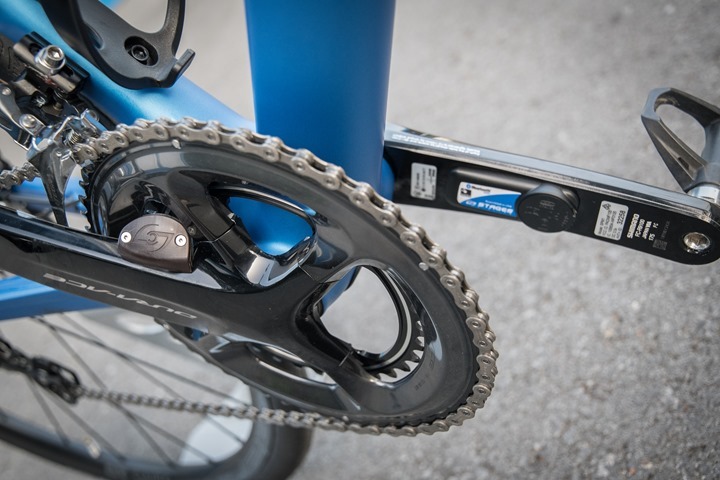

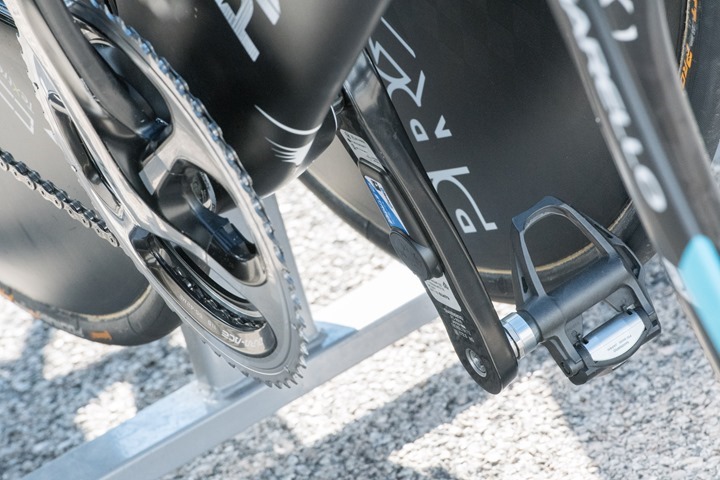



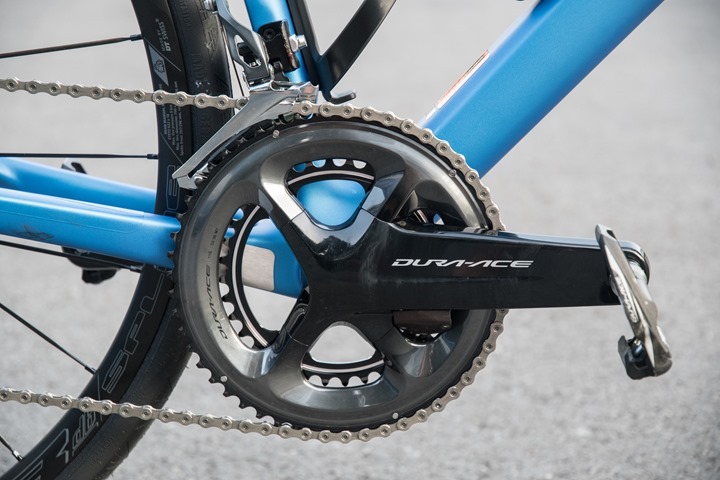
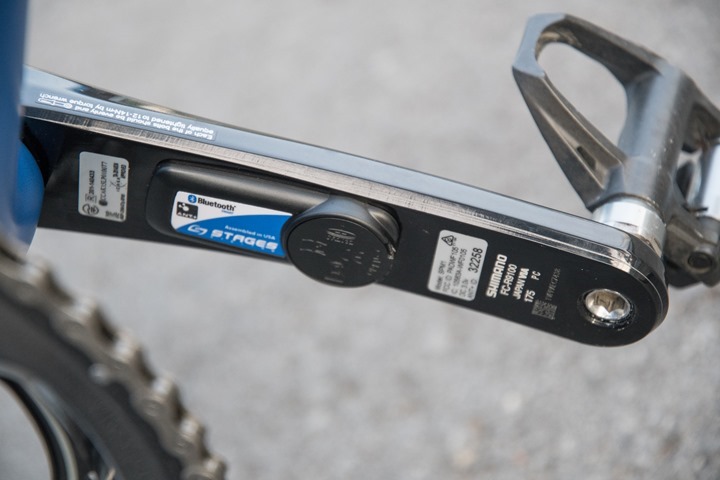
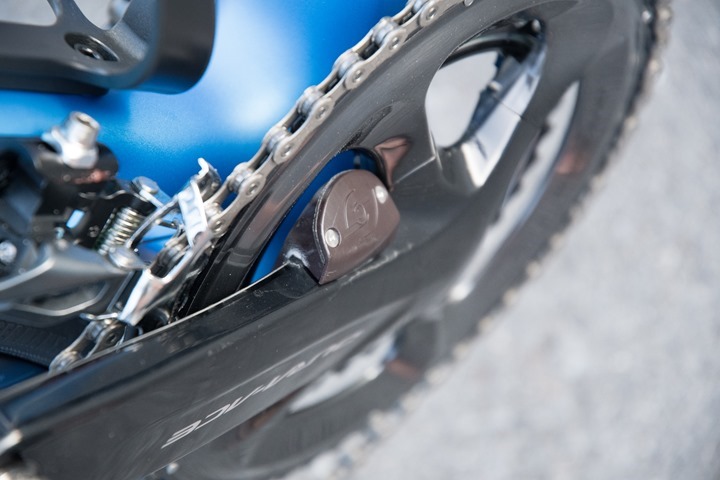
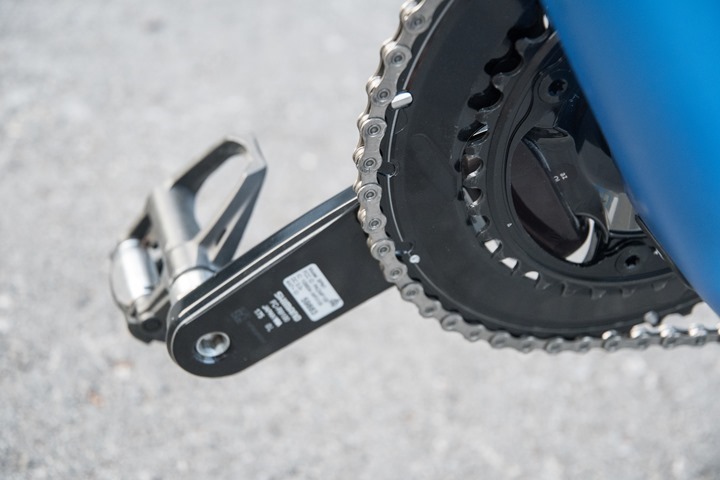
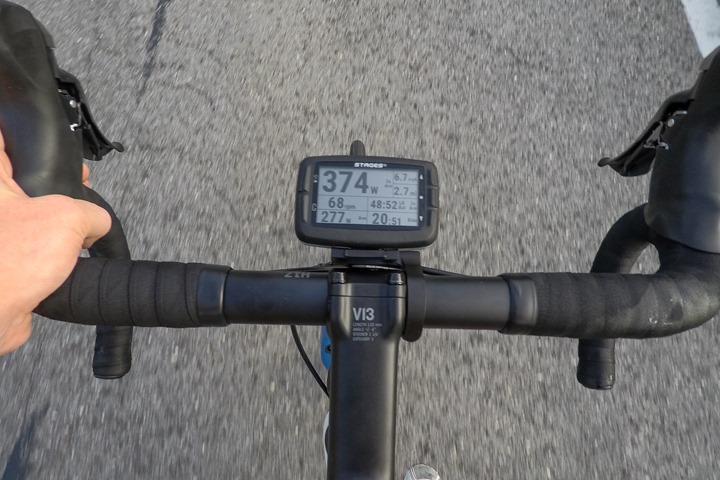
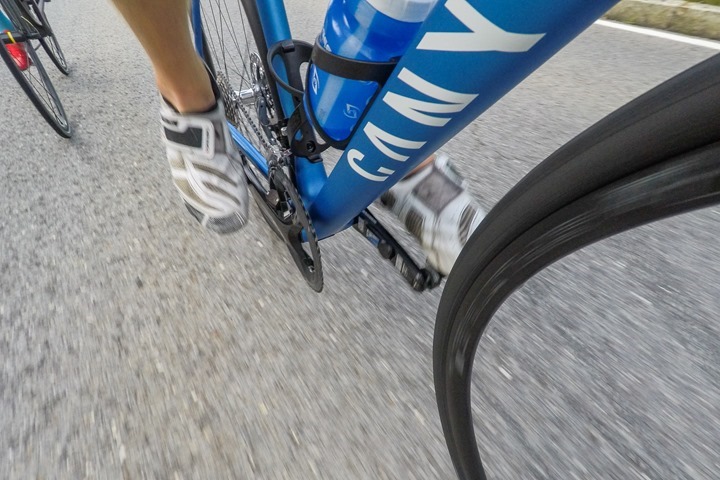


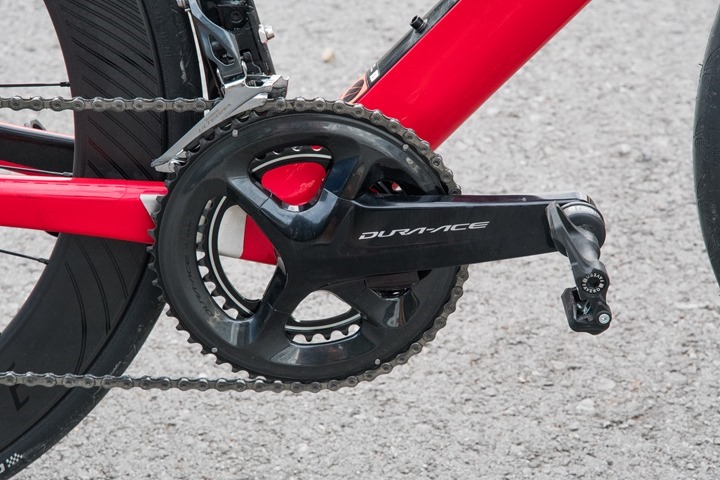


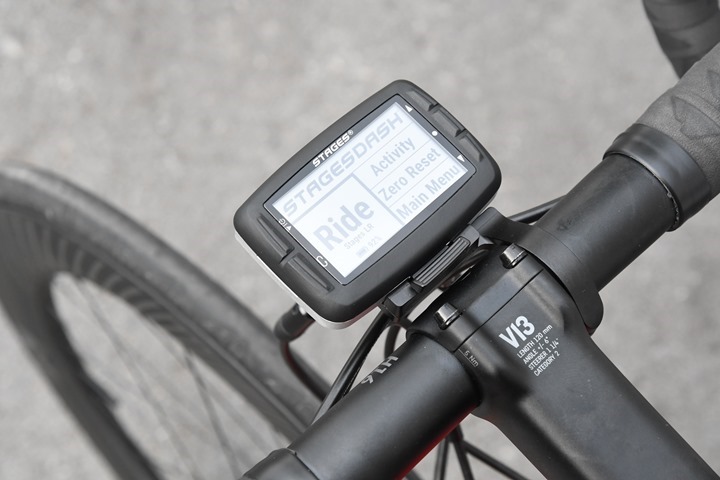

![clip_image001[5] clip_image001[5]](https://www.dcrainmaker.com/images/2017/08/clip_image0015_thumb.jpg)
![clip_image001[7] clip_image001[7]](https://www.dcrainmaker.com/images/2017/08/clip_image0017_thumb.jpg)

![clip_image002[5] clip_image002[5]](https://www.dcrainmaker.com/images/2017/08/clip_image0025_thumb.gif)
![clip_image002[7] clip_image002[7]](https://www.dcrainmaker.com/images/2017/08/clip_image0027_thumb.gif)
